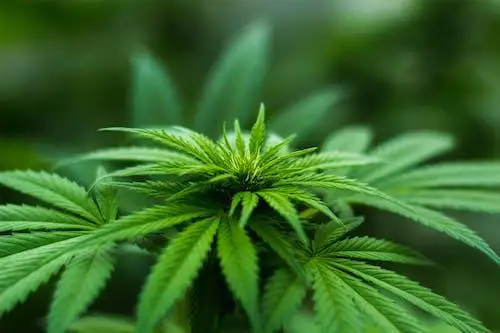Outdoor Cannabis Cultivation: Mitigating Pests and Diseases Naturally
Outdoor cannabis growing can be highly rewarding. It gives you an exciting and satisfying experience as you connect with nature. This experience lets you face and overcome the various challenges that come along the way and learn the curves and bends along the path, giving you the necessary cultivation skills.
However, outdoor plants are exposed to pests and diseases that come in different sizes and shapes. These organisms attack plants in various destructive ways. Besides, your outdoor grow is exposed to pathogens inhabiting fields, forests, and gardens.
So, what is the solution to this problem? Do you resort to traditional remedies that use harsh chemicals with counterproductive effects? This option isn’t the best because most pesticides are unsafe for human consumption and harm the environment with long-term effects. Further, their continued use could contaminate your plantation with chemicals.
Our post explores a natural and safe route to protecting your cannabis plantation against pests and diseases. Remain on this page to learn more.

Common Cannabis Pests and Diseases
Let’s examine the problem before presenting our natural solutions. Different pests attack cannabis at various stages of its growth. Below are the common pests to pay attention to in your garden.
- Thrips
- Whitefly
- Spider mites
- Leaf miners
- Aphids
- Cabbage loopers
Many diseases may also affect cannabis plantations, with the major ones being as follows:
Tobacco Mosaic Virus (TMV). This incurable disease was initially discovered in the tobacco plant, hence its name. It makes cannabis develop pale mottled marks on leaves and twisted growth. Affected plants become sickly and grow slowly.
Bud rot or mold. This disease can turn ripe cannabis into a mold. It dries roots and makes plants rot at the base of the leaves. You can prevent this disease by maintaining low humidity during blooming and using UVA supplemental lighting to reduce mold spores. You may also prevent it by boosting airflow, removing excess foliage, and promptly removing affected plant areas.
Root Rot. Root rot makes your plant’s roots slimy and brown. They droop because of reduced nutrient intake. Different pathogens like algae, fungi, and parasites cause this disease.
White Powdery Mold. This disease thrives in poor air circulation and high humidity. Fortunately, it’s preventable and treatable using a 33% milk solution or a dilute Potassium Bicarbonate spray. Remember to check out this page for more insights on growing outdoor cannabis seeds https://askgrowers.com/seeds/outdoor.
Four Organic Ways to Mitigate Diseases and Pests
Now, what organic solutions exist to prevent and mitigate these attacks on your cannabis? This section has four top ways to do so.
1. Useful insects
You can beat pathogens in their game by introducing friendly insects into your grow to mitigate and fight pests. These beneficial insects eat the pests that damage your crops. Some insects you can introduce include the following:
Ichneumonids. Ichneumonids or parasitic wasps reduce caterpillars, which damage your crops’ interior and exterior. The female wasps inject eggs into living caterpillars. These eggs hatch into larvae, which eat the caterpillar from within. While the idea doesn’t look “cool,” it still benefits your plants’ health, vitality, and productivity.
Praying mantis. Like ichneumonids, you may introduce praying mantis into your garden to eat caterpillars.
Lacewings. These insects consume aphids, leafhoppers, spider mites, mealybugs, thrips, and other soft-bodied pests. You can buy them in egg form because they are fragile.
Ladybugs. You can also bring ladybugs into your farm to do the same job as lacewings. These insects help devour destructive aphids. No wonder the Planet Natural Research Center says a ladybug can eat up to 50 aphids daily. This daily consumption means one insect can eat up to 5,000 aphids during its lifetime.
2. Netting
Netting is another green strategy for mitigating pests and diseases. It saves your plants from bigger predators that consume crops. Birds are the biggest culprits on this list and cause more damage than smaller pests like worms. This protection is necessary, especially when your cannabis is still in its delicate development stages. Netting blocks birds from accessing your fragile crops without hindering sunlight or airflow.
3. Polyculture
Polyculture is another natural way of stemming pests and diseases. This alternative is excellent, holistic, and natural when seeking a solution to mitigate pests and diseases. When done correctly, it’s a great way of adding other crop species to your cannabis garden. This addition boosts biodiversity and improves your plantation’s esthetic appeal.
This practice surrounds your cannabis with other crop species that reduce disease and pest risk. This method aligns with the principle of synergetic balance and not isolated survival. If you have ever passed through a forest, you will be better positioned to understand this concept.
All the plants in the forest live harmoniously, supplying valuable resources other plants need in the ecosystem. But do you know that forest plants aren’t as vulnerable to pests and diseases as those humans grow? The answer shows you the power of synergetic harmony and co-existence. This synergy improves a growing garden’s environment’s overall vitality and health.
Further, this strategy reduces many risks that monoculture can’t address. For instance, diverse plants attract predatory insects into the ecosystem, devouring some pests. Additionally, companion crops are natural pesticides because some release natural chemicals into their environment. Some perfect companion plants to grow are peppermint, basil, coriander, Melissa, and lavender. So, what do you do with these accompanying crops? They are an easy and organic way of reducing your food budget because you can use them in meals.

4. Neem-based Spray
Lastly, you can resort to natural pesticides to avoid the harmful effects of harsh industrial chemicals released into the environment. Neem oil is a plant-based remedy extracted from neem, a tree native to India and other parts. It’s extracted through cold pressing to yield high-quality virgin neem oil with all the active ingredients.
This mild natural pesticide fights against small soft-bodied insects that destroy cannabis, such as aphids, spider mites, white flies, and mealybugs. Moreover, neem oil doesn’t scare away bigger beneficial insects like bees and ladybugs. But be careful to spray your cannabis in the evening when these useful insects are least active. However, neem oil isn’t effective against pests like caterpillars.
Using neem or neem-based pesticides has many benefits. It gives your plants a protective and shiny appearance that makes your cannabis leaves less prone to legal diseases like blight, rust, and powdery mildew. No wonder the National Pesticide Information Center summarizes its benefits and effectiveness with the following words.
“Neem oil is made of many components, including Omega 3, 6, and 9 Fatty Acids. Azadirachtin is the most active component as a pesticide. It reduces insects’ feeding ability and acts as a general insect repellent. It also interferes with insect hormone systems, making it harder for insects to grow and lay eggs. Azadirachtin can also repel and reduce the feeding of nematodes.”
Bottom Line
We have shared all the little secrets you need to know to mitigate pests and diseases in your outdoor cannabis plantation naturally. What is the next step? Go ahead and use these insights to get the best out of your outdoor growth.
The author of this article is Tia Moskalenko, an experienced organic weed grower and a blogger at AskGrowers. Tia shares her own experience and latest research findings to simplify the craft of cannabis grown for all newbies in this industry. She believes that everyone should have a chance to grow their herbal remedy at home and works on consumer education in this area.








